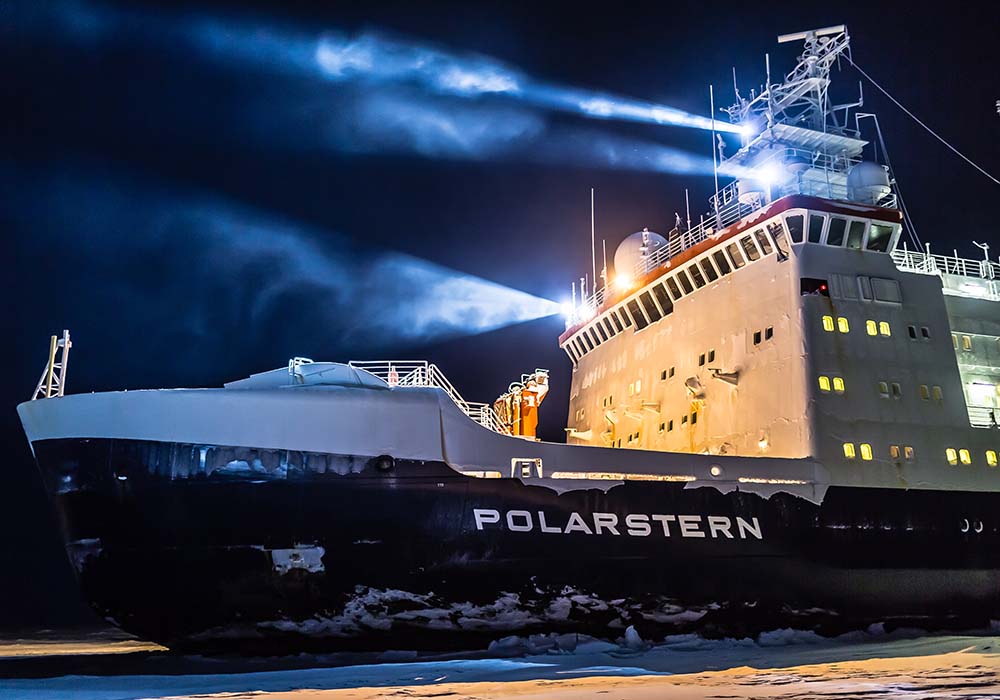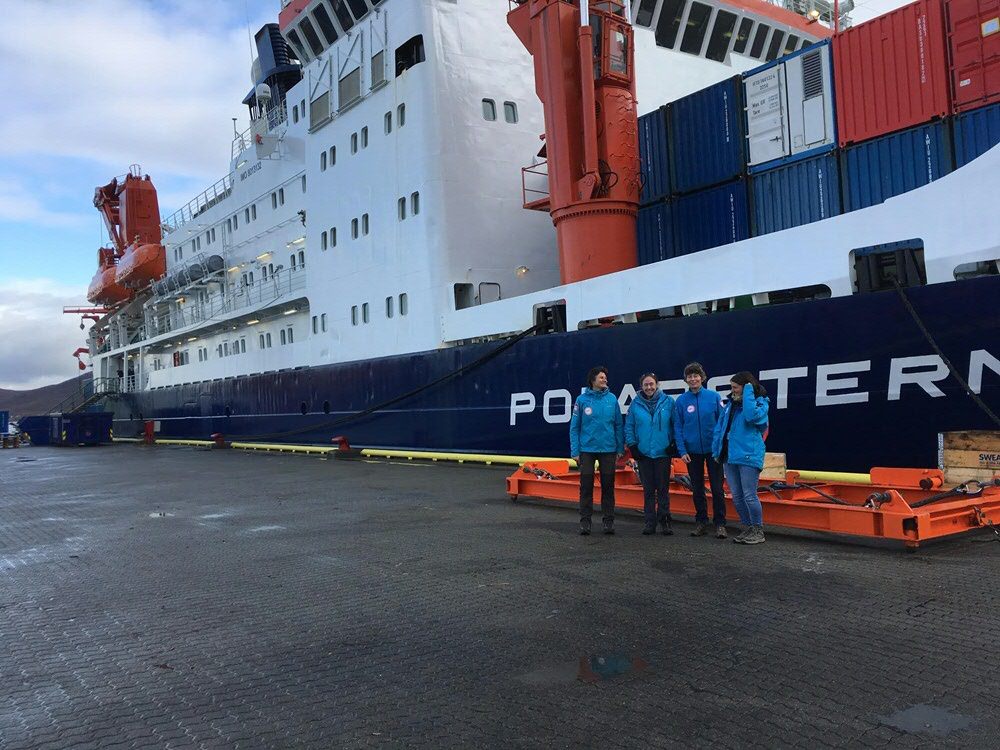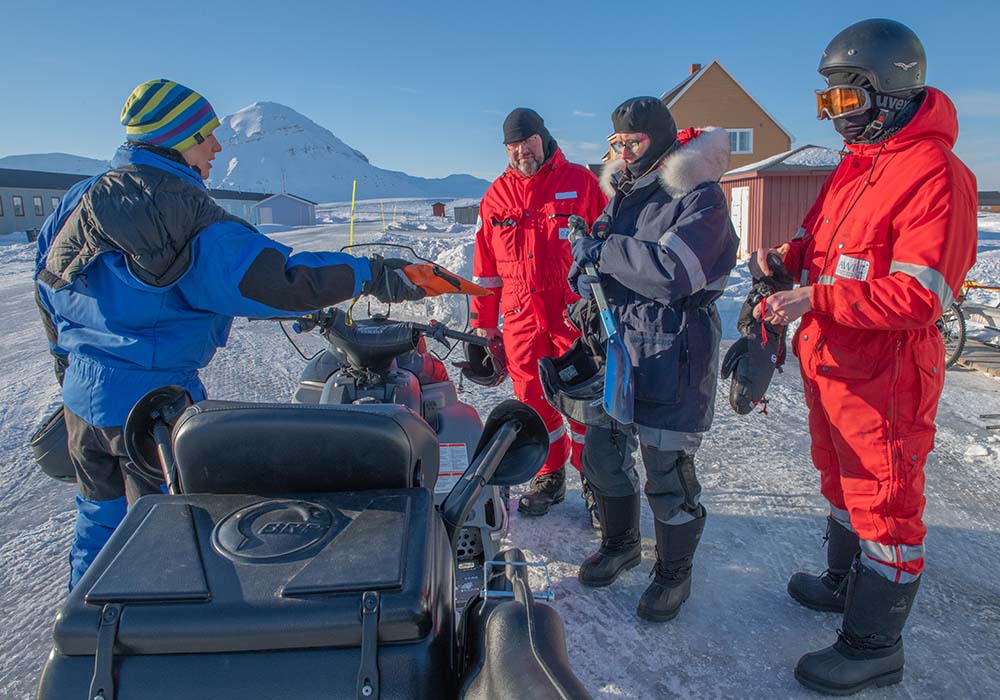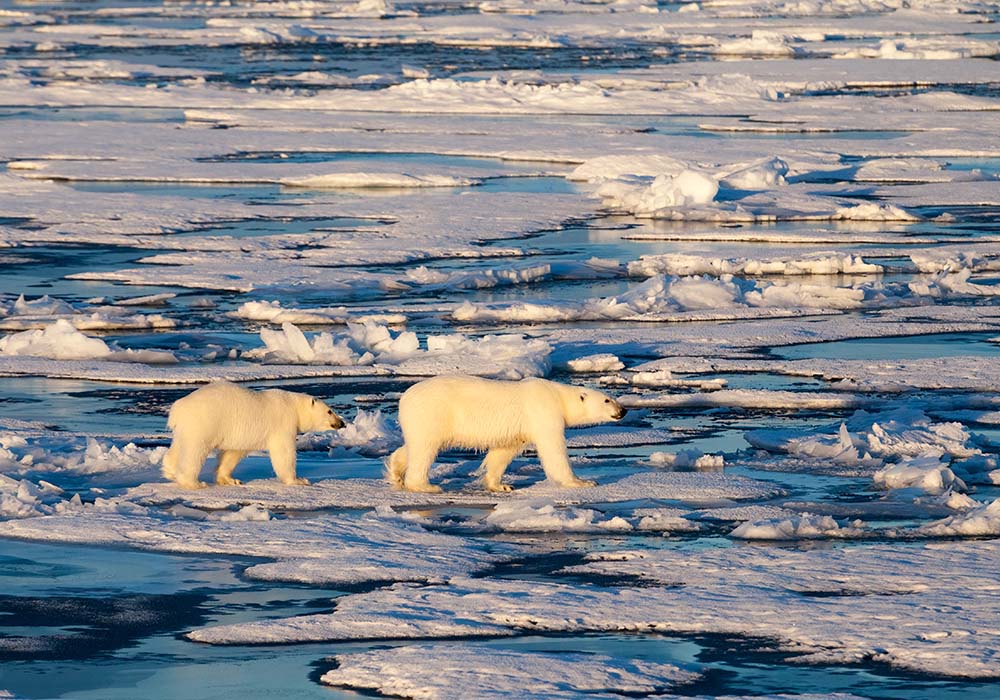Start of MOSAiC – the Greatest Arctic Research Expedition of All Time
After a decade of preparations, it’s finally time: on the evening of 20 September the German icebreaker Polarstern departs from the Norwegian port of Tromsø. Escorted by the Russian icebreaker Akademik Fedorov, she will set sail for the Central Arctic. On board researchers will investigate a region that is virtually inaccessible in winter, and which is crucial for the global climate. They will gather urgently needed data on the interactions between the atmosphere, ocean and sea ice, as well as on the ecosystem. Thanks to the collaboration between international experts, the one-year-long ice drift past the North Pole will take climate research to a completely new level.
Hardly any region has warmed as much as the Arctic over recent decades. At the same time, we lack year-round observations from the ice-covered Arctic Ocean. For the first time, the MOSAiC expedition will drift in the ice with a modern research icebreaker for an entire year, allowing scientists to investigate the Arctic winter in the vicinity of the North Pole. The climate processes there are a missing piece of the puzzle that is needed in order to make better prognoses regarding global climate change. It’s thought that the extreme warming in the Arctic has an enormous impact on the middle latitudes.


International team
The MOSAiC expedition, led by the Alfred Wegener Institute, Helmholtz Centre for Polar and Marine Research (AWI) entails unprecedented challenges. An international fleet of 4 icebreakers, helicopters and aircraft will supply the team on its epic voyage. A total of 600 international participants, half of which are researchers, including the Dutch University of Groningen (UG) and Wageningen University and Research (WUR), will be part of the mission. This evening at 8:30 p.m. local time, a delegation of scientists and politicians, including the German Federal Minister for Education and Research, Anja Karliczek, will see RV Polarstern off from Tromsø, followed by the Akademik Fedorov.
Markus Rex, Head of MOSAiC, Alfred Wegener Institute, Germany:
“This mission is ground breaking. Never before has there been such a complex Arctic expedition. For the first time we will be able to measure the climate processes in the Central Arctic in winter. And so for the first time we will be able to understand this region and correctly represent it in climate models. The Arctic is the epicentre of global warming and has already undergone dramatic changes. And it is the weather kitchen for our weather in North America, Europe, and Asia. Extreme weather conditions like outbreaks of cold Arctic air here in winter, or heat waves in summer are linked to the changes in the Arctic. At the same time, the uncertainties in our climate models are nowhere bigger than in the Arctic. There aren’t any reliable prognoses of how the Arctic climate will develop further or what that will mean for our weather. Our mission is to change that.”

Dr. Jacqueline Stefels, researcher University of Groningen, team leader and Principle Investigator of the Biogeochemistry team on leg 3 (February-April 2020):
“I am excited about the collaboration with so many colleagues, working with the same goal in mind and gathering so many different aspects of the system at the same time. As participant of leg 3, I hope to experience the transition from winter to spring, which will also be very exciting. Hopefully our instruments will be able to pick-up the start of biological activity. The biggest challenge will be when the drift plan will not work out as planned or the sampling scheme is not achieved and the group needs to adjust to the new situation and deal with disappointments.”
Dr. Maria van Leeuwe, researcher University of Groningen, responsible for algal pigment analyses in the Biogeochemistry team on leg 6 (August - October 2020):
“My biggest challenge will be the condition and performance of the sea ice. It will require flexibility of the teams, and it will also be a challenge having the people collaborate in harmony. I am most excited to witness the change of seasons from summer to autumn.”
First weeks
The two icebreakers will remain in visual contact as they head across the Barents and Kara Seas on course for the Central Arctic. After roughly two weeks they are expected to reach the target region at 130 degrees east and 85 degrees north. The first of a total of six teams will then search for a suitable ice floe to set up the complex research camp on. But the researchers will be working against the clock, since just a few days after their arrival the sun will cease to rise above the horizon. The critical sea ice in the target region poses a further challenge. This year, the sea-ice extent there has decreased significantly. Satellite images also show barely any old sea ice, and instead mainly thin, first-year ice.
The expedition participants will connect the research camp with a network of measuring stations set up over a radius of 50 kilometres by researchers using the escort icebreaker Akademik Fedorov. The MOSAiC School on board the Akademik Fedorov offers young polar researchers and PhD students the unique opportunity to take part in the initial phase of the expedition and to learn about conducting polar expeditions at first hand. As soon as the so-called distributed network has been completed, the two icebreakers will come together for a final exchange of crew and supplies before the Akademik Fedorov returns to Tromsø, where she is due to arrive on 30 October. The researchers on board Polarstern will remain there until mid-December, when they will be replaced by the second team. The expedition will be resupplied, and there will be further team changes over the coming year. There is also an accompanying flight campaign planned for spring 2020, for which a landing strip will be carved out of the sea ice. In late summer 2020, between Greenland and Svalbard, the Polarstern will free herself from the ice and head back to her homeport of Bremerhaven, Germany, where she is expected to arrive in mid-October 2020.
300 researchers
The budget for the expedition is roughly 140 million euros. During the course of the year, circa 300 researchers from 17 countries will be on board, from Belgium, Canada, China, Denmark, Finland, France, Germany, Great Britain, Japan, the Netherlands, Norway, Poland, Russia, Spain, Sweden, Switzerland and the USA. They will be supported on land by researchers from Austria and South Korea. The questions that the researchers will be investigating during the expedition are closely linked. Together they will study the entire climate system in the Central Arctic for the first time. They will gather data on five subareas: atmosphere, sea ice, ocean, ecosystems and biogeochemistry, in order to gain insights into the interactions that shape the Arctic climate and life in the Arctic Ocean.

Research Focuses
- Atmosphere: Complex cloud processes and snow fall, sun and heat radiation, eddies and small vortices, air temperatures as low as minus 40 degrees Celsius and a comparatively warm ocean below, with only a thin layer of cracked ice separating it from the atmosphere. MOSAiC will investigate how these and many other factors together affect the heat balance and the Arctic climate.
- Sea Ice: The Arctic sea ice is changing. The MOSAiC expedition will monitor the lifecycle of the ice for an entire year – how it forms, alters, drifts and cracks, how it thaws, and how, as it does so, it determines the energy flow between the air and the water.
- Ocean: The Arctic Ocean is not an isolated body of water. MOSAiC will investigate which currents and vortices in the ocean transport heat to the Arctic and carry it to the surface there; the relationship between the ocean, atmosphere and ice; and how they interact during the course of an entire year.
- Biogeochemistry: What’s in the Arctic Ocean doesn’t stay in the Arctic Ocean: The ocean, ice and atmosphere are constantly exchanging gases, leading to, among other things, changes in cloud characteristics. During a complete annual cycle, MOSAiC will monitor these gases and other important chemical compounds in the water, ice and air.
- Ecosystem: How do Arctic life forms survive extreme cold, solid ice cover and months of darkness during the polar night, and what sort of metabolisms do they have? The MOSAiC expedition will explore this mystery of life, which continues under what appear to be extremely adverse conditions, throughout a complete annual cycle.
Information
You can find the latest news from the Arctic via the MOSAiC channels on Twitter (@MOSAiCArctic) and on Instagram (@mosaic_expedition) using the hashtags #MOSAiCexpedition, #Arctic and #icedrift. There is more information on the expedition at: www.mosaic-expedition.org. The MOSAiC web app allows you to follow Polarstern’s drift route live: follow.mosaic-expedition.org

| Last modified: | 19 March 2020 4.13 p.m. |
More news
-
03 April 2025
IMChip and MimeCure in top 10 of the national Academic Startup Competition
Prof. Tamalika Banerjee’s startup IMChip and Prof. Erik Frijlink and Dr. Luke van der Koog’s startup MimeCure have made it into the top 10 of the national Academic Startup Competition.
-
01 April 2025
NSC’s electoral reform plan may have unwanted consequences
The new voting system, proposed by minister Uitermark, could jeopardize the fundamental principle of proportional representation, says Davide Grossi, Professor of Collective Decision Making and Computation at the University of Groningen
-
01 April 2025
'Diversity leads to better science'
In addition to her biological research on ageing, Hannah Dugdale also studies disparities relating to diversity in science. Thanks to the latter, she is one of the two 2024 laureates of the Athena Award, an NWO prize for successful and inspiring...
